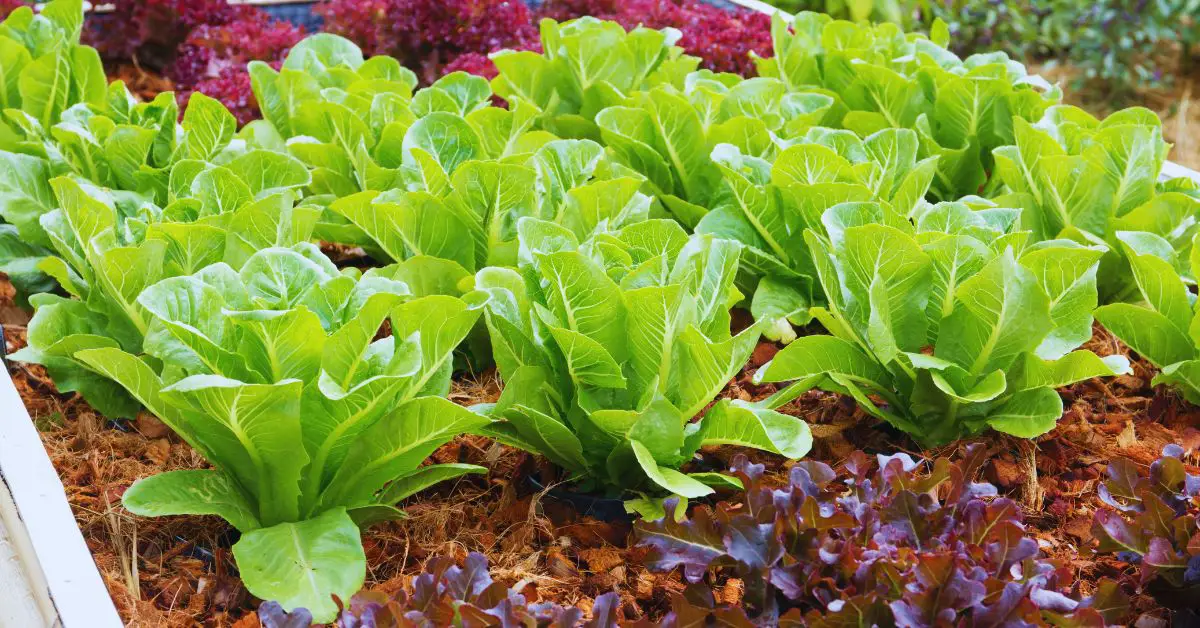A Japanese garden is a beautiful and serene space that brings a sense of peace and harmony to any area. Japanese gardens are designed to reflect nature’s beauty in a simple and elegant way. They often include elements like water, stones, plants, and ornaments that have symbolic meanings.
Creating a Japanese garden can transform your yard into a tranquil retreat. These gardens are not just about appearance but also about creating a feeling of calmness. They provide a place where you can relax and enjoy nature.
In this guide, you will learn how to plan and build your own Japanese garden. We will cover the essential elements, design tips, and maintenance advice. Let’s begin your journey to creating a serene and beautiful Japanese garden in your own space.
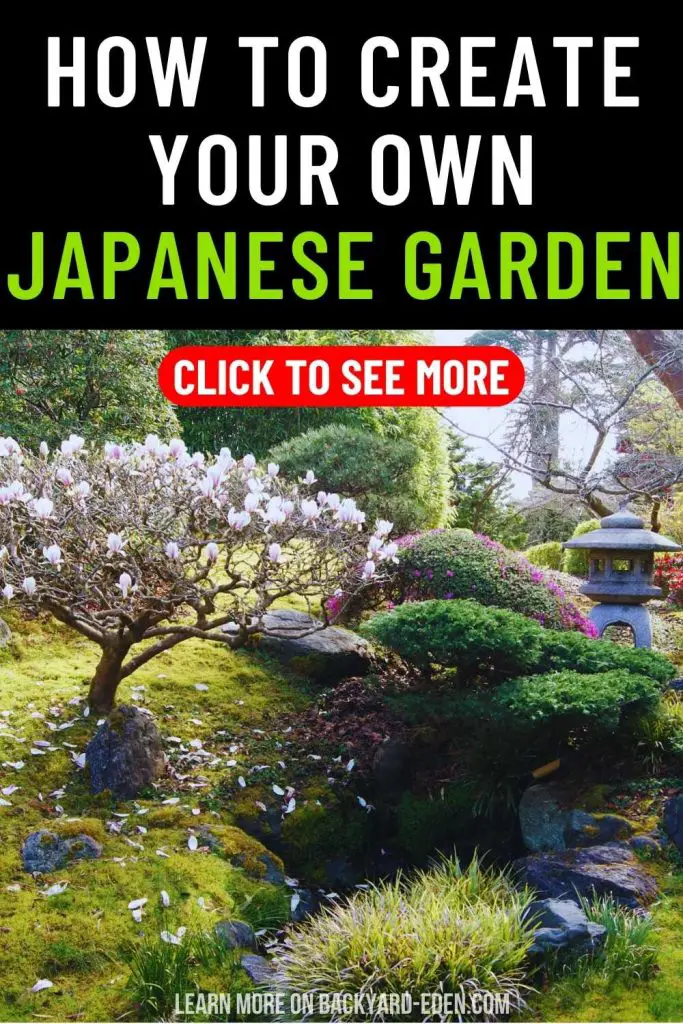
Understanding the Elements of a Japanese Garden
Simplicity and Naturalness
One of the key features of a Japanese garden is simplicity. Keep the design simple and avoid clutter. Everything should look natural and unforced. Use minimal decorations and focus on natural elements like rocks, plants, and water.
Balance and Harmony
Achieving balance and harmony is crucial in a Japanese garden. Ensure that all elements work together to create a peaceful atmosphere. This means carefully placing stones, plants, and water features to balance each other. The garden should look harmonious from every angle.
Symbolism
Japanese gardens often use elements that have symbolic meanings. Rocks can represent mountains or islands, and water can symbolize rivers or the sea. Plants like pine trees and bamboo are symbols of strength and resilience. Understanding these symbols can help you design a garden that is both beautiful and meaningful.
By understanding these elements, you can create a Japanese garden that captures the essence of nature and provides a tranquil space for relaxation. Focus on simplicity, balance, and symbolism to achieve an authentic and serene garden.
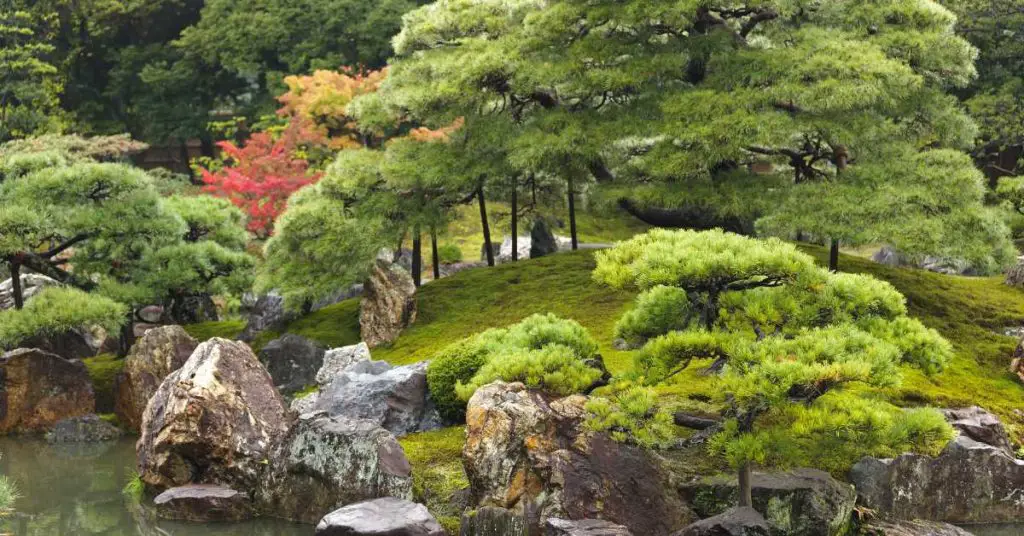
Planning Your Japanese Garden
Choosing the Location
The first step in creating a Japanese garden is choosing the right location. Look for a quiet and peaceful spot in your yard. This will help create the tranquil atmosphere that is essential for a Japanese garden. Make sure the area gets enough sunlight for the plants you plan to use.
Designing the Layout
Designing the layout is crucial for a cohesive and harmonious garden. Start by sketching a rough layout on paper. Think about where you want to place elements like water features, stones, and plants. Make sure there is a natural flow to the design, with paths and elements leading the eye smoothly from one part of the garden to another.
Creating a Scale Drawing
Once you have a rough layout, create a scale drawing to visualize your design better. Use graph paper to draw your garden to scale. This helps you see how much space each element will take and ensures everything fits together nicely. It also makes it easier to adjust the design before you start building.
Planning your Japanese garden carefully ensures that all elements work together harmoniously. Take your time to choose the best location, design a thoughtful layout, and create a detailed scale drawing. This preparation will make the building process smoother and help you achieve a beautiful, tranquil garden.
Essential Elements to Include
Water Features
Water features are a central part of Japanese gardens. They symbolize tranquility and the flow of life. You can incorporate ponds, streams, or simple water basins. Ponds can be home to koi fish and water plants, adding life and movement to your garden. Streams can create soothing sounds, enhancing the peaceful atmosphere.
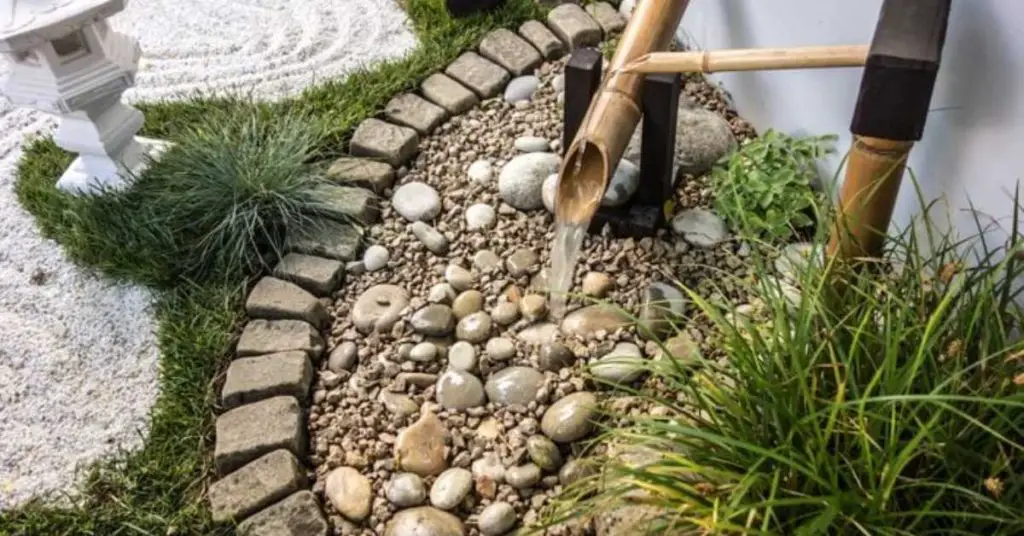
Stones and Gravel
Stones and gravel are used to create paths, borders, and focal points. Large stones can represent mountains or islands, while gravel can symbolize water or be used in Zen gardens for raking patterns. Place stones carefully to create a natural look. Gravel paths should be smooth and well-defined.
Plants and Trees
Plants and trees are vital for bringing life and color to your Japanese garden. Choose plants like bamboo, Japanese maple, azaleas, and moss. These plants are traditional and add to the authentic feel. Trees like the Japanese maple provide beautiful foliage, while moss adds a soft, lush ground cover. Keep the planting simple and avoid overcrowding.
Lanterns and Ornaments
Adding traditional Japanese lanterns and ornaments can enhance the garden’s aesthetic. Stone lanterns, pagodas, and bamboo fountains are popular choices. Place these ornaments thoughtfully, using them as focal points or accents. They should complement the natural elements without overwhelming the garden.
Including these essential elements ensures your Japanese garden is both beautiful and authentic. Water features, stones, plants, and ornaments work together to create a harmonious and tranquil space. Carefully choose and place each element to enhance the garden’s overall beauty and serenity.
Step-by-Step Guide to Building Your Garden
Preparing the Site
Start by preparing the site for your Japanese garden. Clear the area of any debris, weeds, or existing plants. Level the ground if necessary to create a smooth surface. If you’re planning to include a pond or stream, now is the time to dig out the area for it. Make sure the soil is well-draining to avoid waterlogging.
Installing Water Features
Once the site is prepared, it’s time to install any water features. For a pond, line the hole with a pond liner and fill it with water. Add a pump if you want a fountain or stream. For simpler water features like basins, place them where they can be easily accessed and appreciated. Ensure all water features are level and secure.
Placing Stones and Gravel
Next, place the stones and spread the gravel. Arrange large stones first as focal points or borders. Use smaller stones to create pathways or accents. Spread gravel in areas where you want to mimic the look of water or create Zen patterns. Use a rake to smooth the gravel and create designs if desired.
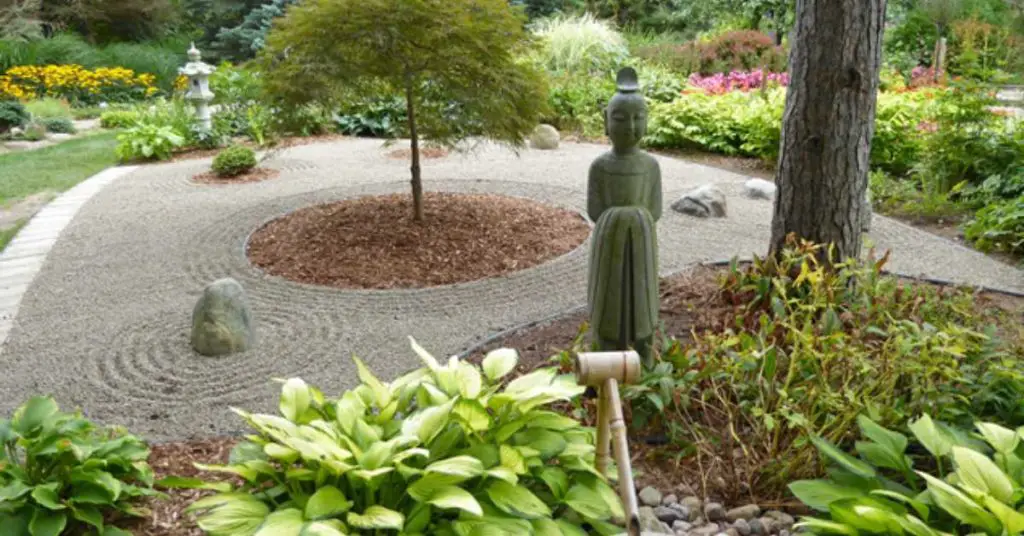
Planting Trees and Shrubs
Now it’s time to plant the trees and shrubs. Start with the larger plants, like trees, to establish the main structure. Then add shrubs and smaller plants around them. Make sure to space the plants appropriately to allow for growth. Water the plants thoroughly after planting to help them establish roots.
Adding Final Touches
Finally, add the finishing touches to your garden. Place lanterns, pagodas, and other ornaments in strategic locations. Make sure they enhance the natural beauty of the garden without overpowering it. Check that all elements are securely in place and make any final adjustments needed to achieve balance and harmony.
By following these steps, you can build a beautiful Japanese garden. Each stage, from site preparation to adding final touches, is crucial for creating a harmonious and tranquil space. Take your time and enjoy the process of bringing your garden to life.
Maintenance Tips
Regular Pruning
Maintaining the beauty of your Japanese garden requires regular pruning. Keep plants and trees trimmed and shaped to ensure they look neat and healthy. Prune dead or overgrown branches to promote new growth. Regular pruning helps maintain the desired shape and size of your plants, keeping the garden looking tidy and balanced.
Cleaning Water Features
Water features need regular cleaning to stay clear and attractive. Remove debris and algae from ponds and streams. If you have a pump, clean the filter regularly to ensure it works efficiently. For smaller water basins, change the water frequently to keep it fresh and prevent stagnation.
Weed Control
Weeds can disrupt the harmony of your Japanese garden. Regularly check for weeds and remove them promptly. Mulching around plants can help suppress weed growth and retain moisture. Use natural weed control methods to keep your garden chemical-free and healthy.
By following these maintenance tips, you can keep your Japanese garden looking beautiful and serene all year round. Regular pruning, cleaning water features, and controlling weeds are essential tasks that ensure your garden remains a peaceful and inviting space.
What Are the Key Elements of a Japanese Garden?
The key elements of a Japanese garden include water features, stones and gravel, plants and trees, and traditional ornaments like lanterns. Water features symbolize tranquility and life flow, while stones represent mountains or islands.
Plants such as bamboo and Japanese maple add beauty and symbolize strength and resilience. Traditional ornaments enhance the garden’s aesthetic and cultural feel.
How Much Space Do I Need to Create a Japanese Garden?
You don’t need a lot of space to create a Japanese garden. Even a small area can be transformed into a serene retreat with careful planning. The key is to use the space efficiently and focus on simplicity. You can adapt the design elements to fit the available space, whether it’s a corner of your yard or a small balcony.
What Types of Plants Are Best for a Japanese Garden?
The best plants for a Japanese garden include bamboo, Japanese maple, azaleas, and moss. Bamboo and Japanese maple add height and structure, while azaleas provide colorful blooms. Moss is perfect for ground cover, creating a lush and soft look.
These plants are traditional in Japanese gardens and thrive in various conditions, adding to the garden’s beauty and harmony.
How Do I Maintain the Balance and Harmony in My Garden Design?
Maintaining balance and harmony in your garden design involves careful placement of elements. Ensure that stones, plants, and water features are arranged to complement each other. Avoid overcrowding and keep the design simple. Regular maintenance, like pruning and cleaning, helps keep the garden looking balanced and serene.
Can I Create a Japanese Garden in a Small Space?
Yes, you can create a Japanese garden in a small space. Focus on using compact plants and miniaturized features. Small water basins, carefully placed stones, and petite plants like moss and miniature trees can create the essence of a Japanese garden. The key is to maintain simplicity and balance, making the most of the limited space available.
Frequently Asked Questions (FAQs)
What Are the Key Elements of a Japanese Garden?
The key elements of a Japanese garden include water features, stones and gravel, plants and trees, and traditional ornaments like lanterns. Water features symbolize tranquility and the flow of life, stones represent mountains or islands, and plants like bamboo and Japanese maple add natural beauty and symbolism. Traditional ornaments enhance the cultural and aesthetic appeal of the garden.
How Much Space Do I Need to Create a Japanese Garden?
You don’t need a lot of space to create a Japanese garden. Even a small area can be transformed into a serene retreat with careful planning. The key is to use the space efficiently and focus on simplicity. Adapt the design elements to fit the available space, whether it’s a corner of your yard or a small balcony.
What Types of Plants Are Best for a Japanese Garden?
The best plants for a Japanese garden include bamboo, Japanese maple, azaleas, and moss. Bamboo and Japanese maple add height and structure, azaleas provide colorful blooms, and moss creates a lush, soft ground cover. These plants thrive in various conditions and contribute to the garden’s beauty and harmony.
How Do I Maintain the Balance and Harmony in My Garden Design?
Maintaining balance and harmony in your garden design involves careful placement of elements. Ensure that stones, plants, and water features are arranged to complement each other. Avoid overcrowding and keep the design simple. Regular maintenance, like pruning and cleaning, helps keep the garden looking balanced and serene.
Can I Create a Japanese Garden in a Small Space?
Yes, you can create a Japanese garden in a small space. Focus on using compact plants and miniaturized features. Small water basins, carefully placed stones, and petite plants like moss and miniature trees can capture the essence of a Japanese garden. The key is to maintain simplicity and balance, making the most of the limited space available.
Conclusion
Creating a Japanese garden is a rewarding and peaceful endeavor. By understanding and incorporating key elements like water features, stones, and traditional plants, you can transform any space into a serene retreat.
Careful planning and thoughtful design are essential. Choose the right location, design a harmonious layout, and select meaningful elements to include in your garden.
Maintenance is crucial to keep your garden looking beautiful and balanced. Regular pruning, cleaning, and weed control ensure your garden remains a tranquil space.
Whether you have a large yard or a small balcony, you can create a Japanese garden that brings peace and beauty to your home. Start your journey today and enjoy the calming benefits of your own Japanese garden.


